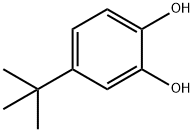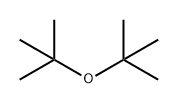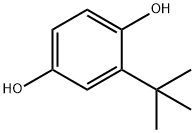PRODUCT Properties
| Melting point: | 52-55 °C(lit.) |
| Boiling point: | 285 °C(lit.) |
| bulk density | 650-700kg/m3 |
| Density | 1.049 |
| vapor pressure | <1 hPa (25 °C) |
| refractive index | n |
| Flash point: | >230 °F |
| storage temp. | Store below +30°C. |
| solubility | methanol: soluble1g/10 mL, clear, colorless to slightly yellow |
| pka | 9.92±0.10(Predicted) |
| form | powder to lump |
| color | White to Light yellow to Light red |
| Odor | at 10.00?%?in?dipropylene glycol. phenolic |
| Water Solubility | 0.2 g/100 mL (25 ºC) |
| Sensitive | Hygroscopic |
| BRN | 2043335 |
| Exposure limits | ACGIH: TWA 5 ppm (Skin) NIOSH: TWA 5 ppm(20 mg/m3) |
| InChIKey | XESZUVZBAMCAEJ-UHFFFAOYSA-N |
| LogP | 1.98 at 25℃ |
| CAS DataBase Reference | 98-29-3(CAS DataBase Reference) |
| NIST Chemistry Reference | 1,2-Benzenediol, 4-(1,1-dimethylethyl)-(98-29-3) |
| EPA Substance Registry System | p-tert-Butylcatechol (98-29-3) |
Description and Uses
Para-tertiary butyl catechol is specially prepared by reacting the impure catechol fraction with tertiary butyl alcohol. Used for its various properties (inhibition of polymerization and as an antioxidizing agent) in the manufacture of rubber, plastics and paints, in the preparation of petrolatum products, and as an antioxidant in oils, it may induce vitiligo.
4-tert-butylcatechol (PTBC) is used as an antioxidant in fats, oils, and mineral oils, and as a stabilizer in polyester resins and polystyrene resins. A concentration of PTBC (up to 0.005%) can be found in paints, glues, thermal paper, lubricating oil, and mineral oil products.
4-tert-Butylcatechol is widely utilized as an inhibitor in polymerization of butadiene, styrene, vinyl acetate and other reactive monomers. It plays an important role in the synthesis of tungsten oxide nanoparticles by nonaqueous sol-gel process. It acts as a stabilizer in the manufacturing of polyurethane foam. It is employed as an antioxidant for synthetic rubber, polymers and oil derivatives. It is also utilized as a purification agent for aminoformate catalysts.
Safety
| Symbol(GHS) |    GHS05,GHS07,GHS09 |
| Signal word | Danger |
| Hazard statements | H302+H312-H314-H317-H410 |
| Precautionary statements | P260-P273-P280-P301+P312-P303+P361+P353-P305+P351+P338 |
| Hazard Codes | C,N,T |
| Risk Statements | 22-34-43-21-51/53-21/22-39/23/24/25-20/21/22-10-50/53 |
| Safety Statements | 26-36/37/39-45-61-24-60 |
| RIDADR | UN 2923 8/PG 3 |
| WGK Germany | 2 |
| RTECS | UX1400000 |
| Autoignition Temperature | 160 °C |
| TSCA | Yes |
| HazardClass | 8 |
| PackingGroup | III |
| HS Code | 29072900 |
| Toxicity | LD50 orally in Rabbit: 815 mg/kg LD50 dermal Rat 1331 mg/kg |




